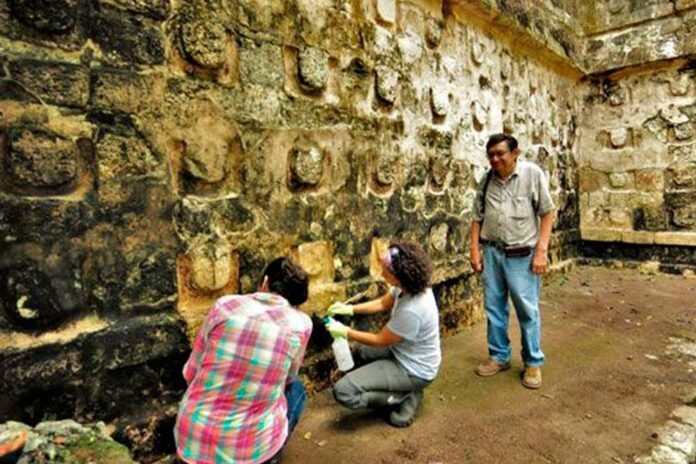In Mexico, archaeologists from the National Institute of Anthropology and History (INAH) completed a season of excavations in the pre-Hispanic city of Culuba, located on the Yucatan peninsula. During the work, they discovered an ancient sacrificial altar and weapons used in the rituals.
According to Ancient Origins, archaeologists have been excavating the central plaza of the ancient Mayan city of Kulub. They stumbled upon a curiously large stone of regular cubic shape, which was probably used as a sacrificial altar. Further excavations only confirmed the initial assumption, since next to the stone, as scientists say, “creepy” Mayan tools were discovered.
In particular, 16 sacrificial stone knives were found, 13 of which were made of obsidian. It should be noted that in the vicinity of Kuluba there is no obsidian, this material, valuable at that time, was imported from afar. Taken together, the findings showed that the sacred site found by archaeologists was in fact “a place of cruel bloodshed in the distant past.” However, the excavated knives, as their laboratory analysis showed, were never used as weapons. There are no signs of wear on them. Probably these were purely ritual objects to be offered to the gods.
At the same time, the altar turned out to be active, and judging by the remaining traces, it was actively used for human sacrifices. It is known from written sources that the rituals were performed by priests. Sometimes volunteers from among local residents were sacrificed, but more often the sacrifice of prisoners of war was practiced. Animals were also sacrificed. Obsidian knives were used for this, and the procedure itself was quite cruel.
It is believed that the Mayan priests knew the anatomy of humans and animals very well. This allowed them to make very precise incisions and control the death rate of the victims. Such a practice is shocking for modern man, but for the Mayans it was a daily ritual. Sacrifices were practiced to appease the gods who control droughts and floods, as well as to maintain cosmic harmony.
The city of Kuluba was discovered in 1940, but its first detailed description appeared only in 1979. Then, for the first time, archaeologists revealed the close cultural connection of this settlement with such large and remote city-states as Chichén Itzá and Puuk. The first archaeological map of Kuluba appeared in 2000. At the same time, the first professional excavations were carried out.

